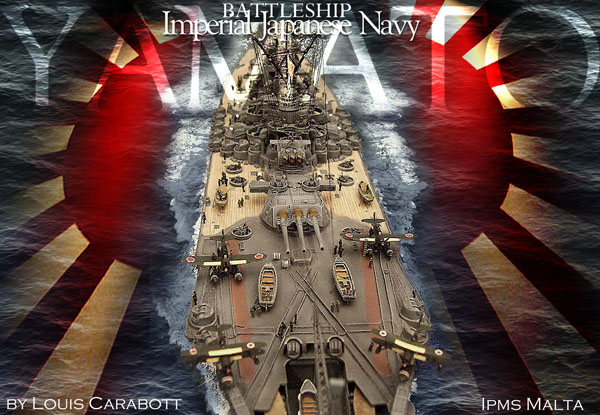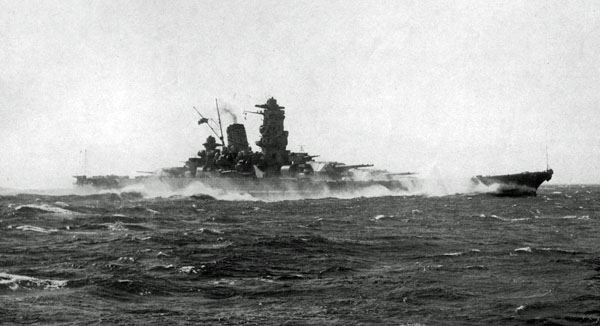
Kit Ref: 78025
Short Feature Article by Lou Carabott


Intro by Geoff
It really does give me a lot of pleasure to bring you this short feature article by Lou Carabott of IPMS Malta featuring his superb build of the Tamiya 1:350 Imperial Japanese Navy Battleship, Yamato. Here are a couple of photos of Lou’s excellent build.
As this is a short feature article there aren’t a lot of words but still plenty of photos provided by Lou that show the main stages of his build and these along with his text are sure to help you if this one is in your stash or you are under way with your own build.
We’ll probably complete this build in two, maybe three updates so you won’t have long to wait to see the whole piece. Just before we get going, here’s a little bit of background about the Yamato.

Yamato (大和?), named after the ancient Japanese Yamato Province, was the lead ship of the Yamato class of battleships that served with the Imperial Japanese Navy during World War II. She and her sister ship, Musashi, were the heaviest and most powerfully armed battleships ever constructed, displacing 72,800 tonnes at full load and armed with nine 46 cm (18.1 inch) main guns. Neither ship survived the war.
Laid down in 1937 and formally commissioned a week after the Pearl Harbour attack in late 1941, Yamato was designed to counter the numerically superior battleship fleet of the United States, Japan’s main rival in the Pacific. Throughout 1942 she served as the flagship of the Japanese Combined Fleet, and in June 1942 Admiral Isoroku Yamamoto directed the fleet from her bridge during the Battle of Midway, a disastrous defeat for Japan. Musashi took over as the Combined Fleet flagship in early 1943, and Yamato spent the rest of the year, and much of 1944, moving between the major Japanese naval bases of Truk and Kure in response to American threats. Although she was present at the Battle of the Philippine Sea in June 1944, Yamato played no part in the battle.
The only time she fired her main guns at enemy surface targets was in October 1944, when she was sent to engage American forces invading the Philippines during the Battle of Leyte Gulf. The Japanese were unaware that Admiral Halsey’s entire massive fast carrier task force with battleships had been successfully lured away by a feint. Left behind was only a slow escort carrier task force armed against ground forces with no hope of protecting vulnerable troop transports from the Yamato. But as the American light ships resembled larger cruisers and carriers, the Japanese believed they were fighting the main fleet. The massive guns of Yamato would not be turned against battleships, but in the Battle off Samar would instead be used in a seemingly mismatched showdown against small and inexpensive light ships and carriers. Nevertheless desperate American sailors and aviators delivered accurate shellfire and torpedoes from ships as small as destroyer escorts. These attacks wrought enough havoc on the Japanese surface force to cause it to turn back, but only after inflicting losses comparable in ships and men to the Battle of Midway.
During 1944, the balance of naval power in the Pacific decisively turned against Japan and, by early 1945, the Japanese fleet was much depleted and critically short of fuel stocks in the home islands, limiting its usefulness. In April 1945, in a desperate attempt to slow the Allied advance, Yamato was dispatched on a one way voyage to Okinawa, where it was intended that she should protect the island from invasion and fight until destroyed. The task force was spotted south of Kyushu by US submarines and aircraft, and on 7 April 1945 she was sunk by American carrier-based bombers and torpedo bombers with the loss of most of her crew.